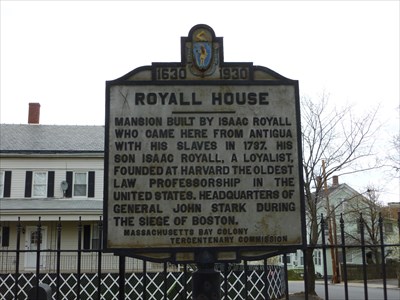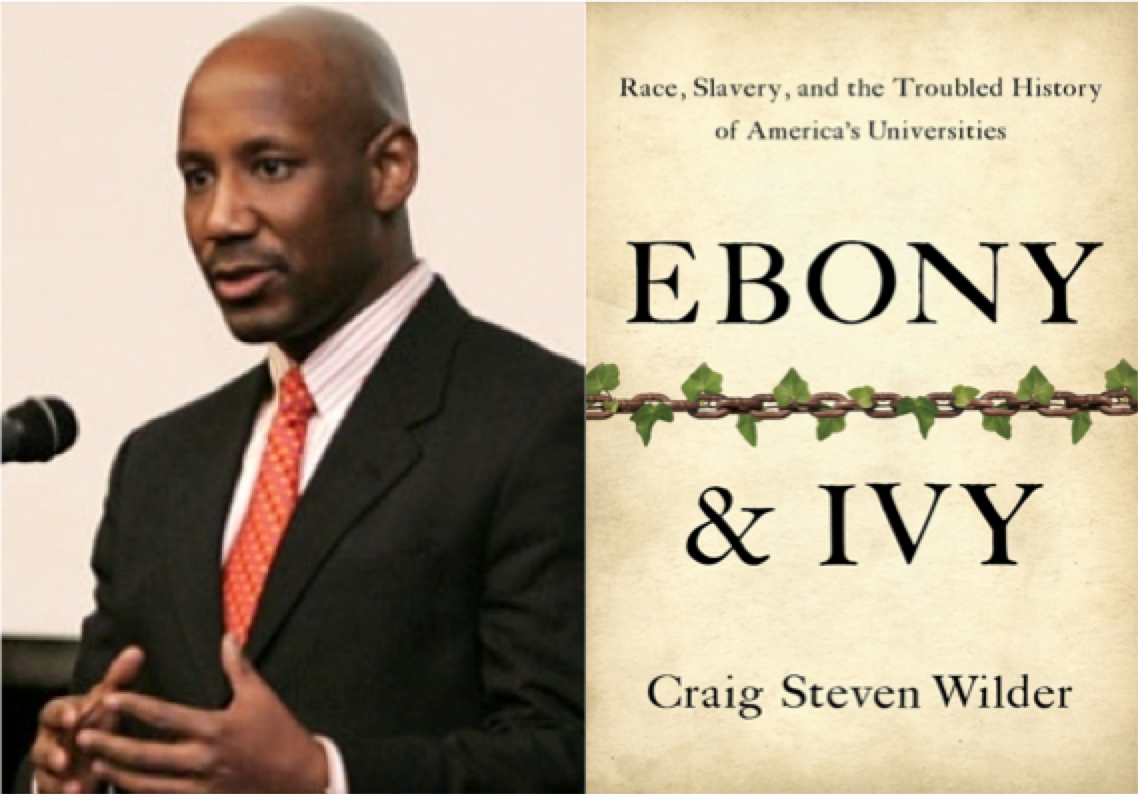
Author Craig Steven Wilder
From the New York Times, "Dirty Antebellum Secrets in Ivory Towers: ‘Ebony and Ivy,’ About How Slavery Helped Universities Grow," by Jennifer Sshuessler, on 18 October 2013 -- When Craig Steven Wilder first began digging around in university archives in 2002 for material linking universities to slavery, he recalled recently, he was “a little bashful” about what he was looking for.
“I would say, ‘I’m interested in 18th-century education,’ or something general like that,” Mr. Wilder said.
But as he told the archivists more, they would bring out ledgers, letters and other documents.
“They’d push them across the table and say, ‘You might want to take a peek at this,’ ” he said. “It was often really great material that was cataloged in ways that was hard to find.”
Now, more than a decade later, Mr. Wilder, a history professor at the Massachusetts Institute of Technology, has a new book, “Ebony and Ivy: Race, Slavery, and the Troubled History of America’s Universities,” which argues provocatively that the nation’s early colleges, alongside church and state, were “the third pillar of a civilization based on bondage.”
He also has a lot more company in the archives. Since 2003, when Ruth Simmons, then the president of Brown University, announced a headline-grabbing initiative to investigate that university’s ties to slavery, scholars at William and Mary, Harvard, Emory, the University of Maryland, the University of North Carolina at Chapel Hill and elsewhere have completed their own studies.
But as he told the archivists more, they would bring out ledgers, letters and other documents.
“They’d push them across the table and say, ‘You might want to take a peek at this,’ ” he said. “It was often really great material that was cataloged in ways that was hard to find.”
Now, more than a decade later, Mr. Wilder, a history professor at the Massachusetts Institute of Technology, has a new book, “Ebony and Ivy: Race, Slavery, and the Troubled History of America’s Universities,” which argues provocatively that the nation’s early colleges, alongside church and state, were “the third pillar of a civilization based on bondage.”
He also has a lot more company in the archives. Since 2003, when Ruth Simmons, then the president of Brown University, announced a headline-grabbing initiative to investigate that university’s ties to slavery, scholars at William and Mary, Harvard, Emory, the University of Maryland, the University of North Carolina at Chapel Hill and elsewhere have completed their own studies.

And that tide is far from over. Last spring, a historian at Princeton began an undergraduate research seminar on the little-explored connections between that university and slavery. In September, the president of the University of Virginia announced a 27-member commission charged with recommending ways to commemorate the university’s “historical relationship with slavery and enslaved people,” in advance of its bicentennial, beginning in 2017.
But Mr. Wilder, scholars say, seems to be the first to look beyond particular campuses to take a broader look at the role of slavery in the growth of America’s earliest universities, which, he argues, were more than just “innocent or passive beneficiaries” of wealth derived from the slave trade.
“Craig shows that what happened at one institution wasn’t simply incidental or idiosyncratic,” said James Wright, a former president of Dartmouth College, which is discussed in the book. “Slavery was deeply embedded in all our institutions, which found ways to explain and rationalize slavery, even after the formation of the American republic.”

“Ebony and Ivy,” published by Bloomsbury, documents connections between slavery and various universities’ founding moments, whether it is the bringing of eight black slaves to campus by Dartmouth’s first president, Eleazar Wheelock, or the announcement by Columbia University (then named King’s College) of the swearing in of its first trustees on a broadside paid for with a single advertisement: for a slave auction near Beekman’s Slip in Lower Manhattan.
Mr. Wilder also ventures into more unexpected territory, including the rise of 19th-century “race science” and the evolution of university fund-raising. Harvard, he notes, emphasized its mission to convert “heathen” Indians in its early appeals for donations; by the late 18th century, its leaders were competing vigorously with those of other institutions for the tuition dollars and patronage of ascendant slave-owning West Indian planters.
“Sometimes I chuckled at how contemporary some of these colonial administrators were,” Mr. Wilder said.

“Ebony and Ivy,” with its cover image of a tendril of ivy wrapped around a chain, may not find a home on many alumni-office coffee tables. But Mr. Wilder, a graduate of Fordham and Columbia who has also taught at Dartmouth and Williams, says that some people are too quick to see political motives behind work like his.
A 2001 report on Yale University’s connections with slavery, he notes, was dismissed by some as a partisan hit job, written by graduate students with connections to labor unions that were then battling with the Yale administration. And the Brown report was begun at a moment when northern universities, along with banks and insurance companies, were threatened with class-action lawsuits demanding financial reparations for their connections with the 18th-century slave trade.
“There has been a fear that there’s something lurking in the archives that will be devastating to these institutions, and that people doing this work are motivated by hostility,” Mr. Wilder said. “But history is a poor medium for seeking revenge.”

The reparations debate has faded, along with much of the controversy surrounding research into universities and slavery. “This movement, once edgy and interesting, has been taken to the vet and defanged and declawed,” said Alfred Brophy, a legal historian who spearheaded a 2004 resolution at the University of Alabama apologizing for the antebellum faculty’s mistreatment of slaves on campus.
Still, universities may not be eager to embrace the research wholeheartedly. At Harvard, a student-generated report on the university’s connections with slavery released in 2011 received personal support and financing from Harvard’s president, Drew Gilpin Faust, but no institutional response, according to Sven Beckert, the professor who led the project.
“The university itself has not reacted in any way, shape or form,” Mr. Beckert said. “There has been no effort to make this into a broader discussion.”

At other campuses, the basic fact-finding is only beginning. When Martha Sandweiss joined Princeton’s history department four years ago, she was surprised that no one had done a report like Harvard’s or Brown’s. A 2008 undergraduate thesis had established that Princeton’s first eight presidents seem to have owned slaves, but little else was known.
This semester, Ms. Sandweiss’s undergraduate research seminar, which she said received informal support from the administration, is investigating the university’s 18th-century financing and the slaveholding practices of particular Princeton classes, with the goal of answering deeper questions about Princeton’s reputation as the most culturally Southern of the Ivies.
“Before the Civil War, about half of the student body came from the South,” Ms. Sandweiss said. “What was it about this place that made people feel like it was a good place to send their sons?”
Lurking behind such historical questions, scholars say, is a more contentious contemporary one: What should universities do today to make African-Americans feel as if they fully belong?

Mr. Wilder, a first-generation college graduate raised by a single mother in the Bedford-Stuyvesant section of Brooklyn, said that his own research had only increased his “sense of ownership” of his own elite education.
He cited the story of Betsey Stockton, an enslaved woman belonging to an early-19th-century president of Princeton, who used her master’s library to study biblical literature and eventually became a missionary in Hawaii.
“Something like that changes the way you think about these institutions,” Mr. Wilder said. “You realize, people of color have always been here.” (source: New York Times)

Its really fun to read this. I enjoyed a lot.
ReplyDeleteGreat Article its really informative. goodjob!
ReplyDeleteIts a great pleasure to read this post.
ReplyDeleteAwesome! Its full of information here
ReplyDelete